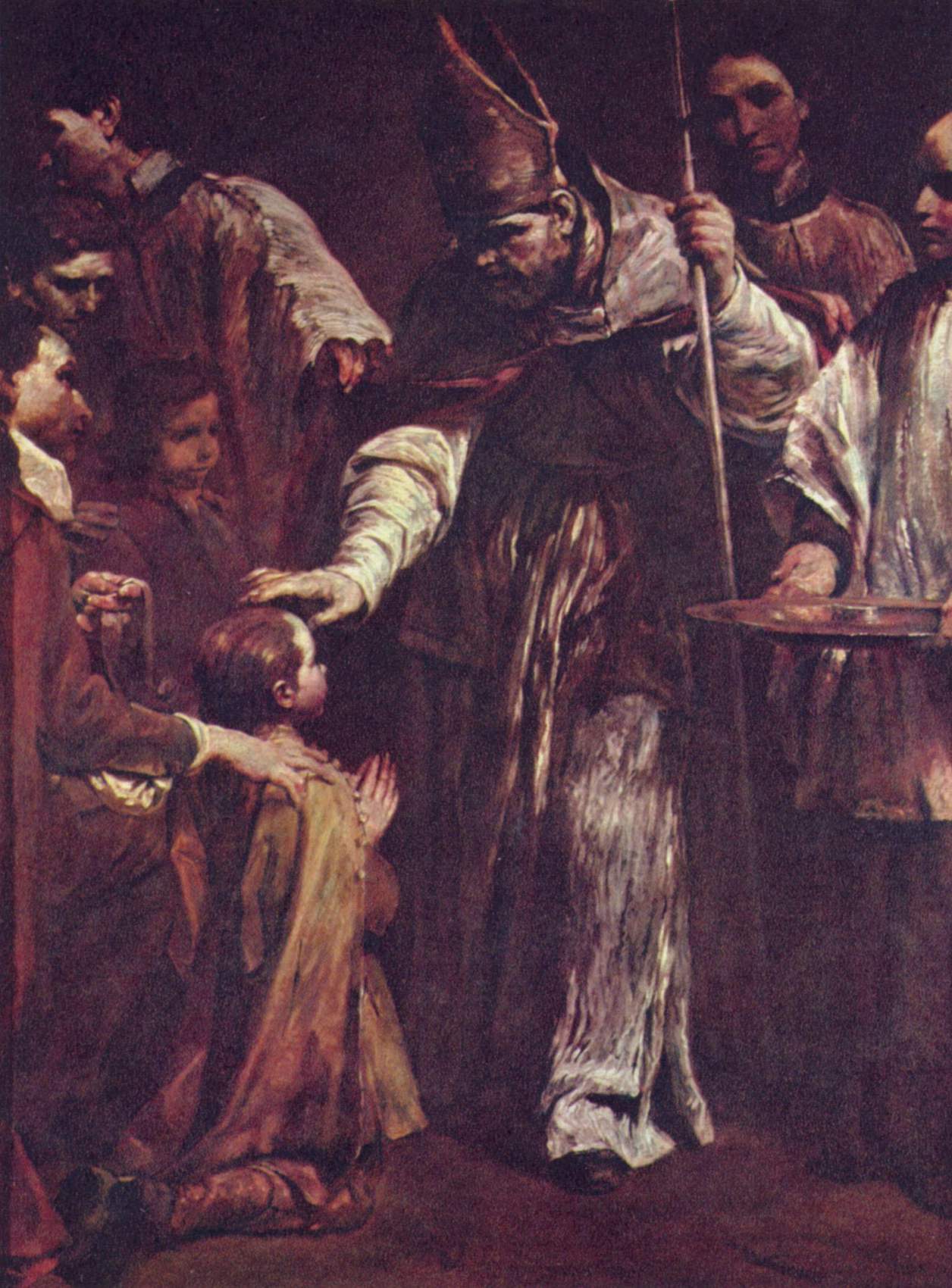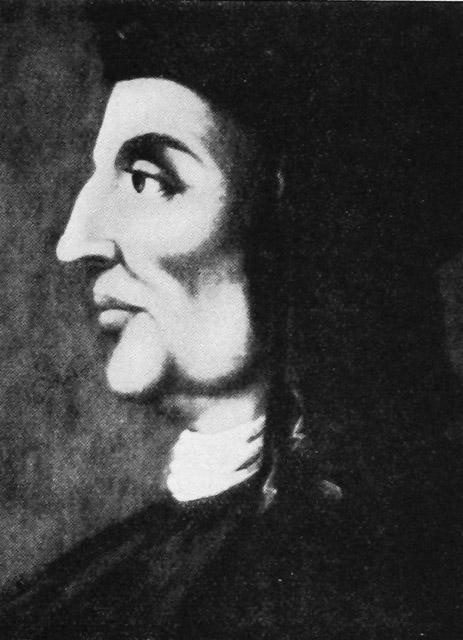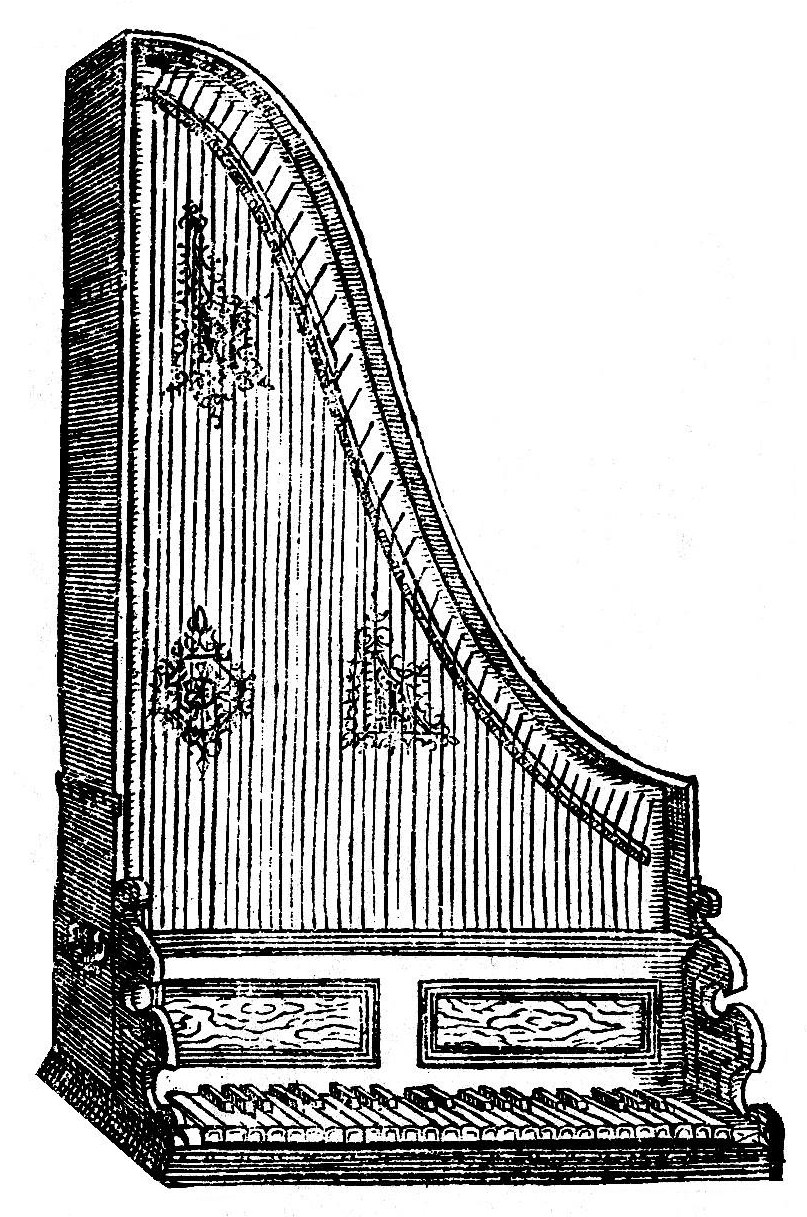|
Bartolomeo Cristofori
Bartolomeo Cristofori di Francesco (; May 4, 1655 – January 27, 1731) was an Italian maker of musical instruments famous for inventing the piano. Life The available source materials on Cristofori's life include his birth and death records, two wills, the bills he submitted to his employers, and a single interview carried out by Scipione Maffei. From the latter, both Maffei's notes and the published journal article are preserved. Cristofori was born in Padua in the Republic of Venice. Nothing is known of his early life. A tale is told that he served as an apprentice to the great violin maker Nicolò Amati, based on the appearance in a 1680 census record of a "Christofaro Bartolomei" living in Amati's house in Cremona. However, as Stewart Pollens points out, this person cannot be Bartolomeo Cristofori, since the census records an age of 13, whereas Cristofori according to his baptismal record would have been 25 at the time. Pollens also gives strong reasons to doubt the a ... [...More Info...] [...Related Items...] OR: [Wikipedia] [Google] [Baidu] |
Padua
Padua ( ; it, Padova ; vec, Pàdova) is a city and ''comune'' in Veneto, northern Italy. Padua is on the river Bacchiglione, west of Venice. It is the capital of the province of Padua. It is also the economic and communications hub of the area. Padua's population is 214,000 (). The city is sometimes included, with Venice (Italian ''Venezia'') and Treviso, in the Padua-Treviso-Venice Metropolitan Area (PATREVE) which has a population of around 2,600,000. Padua stands on the Bacchiglione, Bacchiglione River, west of Venice and southeast of Vicenza. The Brenta River, which once ran through the city, still touches the northern districts. Its agricultural setting is the Venetian Plain (''Pianura Veneta''). To the city's south west lies the Colli Euganei, Euganaean Hills, praised by Lucan and Martial, Petrarch, Ugo Foscolo, and Percy Bysshe Shelley, Shelley. Padua appears twice in the UNESCO World Heritage List: for its Botanical Garden of Padua, Botanical Garden, the most anc ... [...More Info...] [...Related Items...] OR: [Wikipedia] [Google] [Baidu] |
Spinettone
The spinettone ("big spinet") was a kind of harpsichord invented in the late 17th century by Bartolomeo Cristofori, who was later the inventor of the piano. Other names for this instrument were spinettone da teatro ("of the theater"), ''spinetta traversa'' ("transverse spinet"). Description The spinettone was a kind of spinet, which means specifically that its strings were placed in pairs along a diagonal relative to the position of the keyboard. The jacks that plucked the strings were placed in opposite-facing pairs within the larger gaps between strings. Most spinets are smaller than regular harpsichords. The spinettone was very long, but narrower than a regular harpsichord. The novelty of Cristofori's spinettone was that unlike any other spinet, it deployed multiple choirs of strings. Its disposition was 1 × 8′, 1 × 4′, which means one set of strings in the normal octave and one set that sounded an octave higher. As with all multichoired harpsichords, this necessitated ... [...More Info...] [...Related Items...] OR: [Wikipedia] [Google] [Baidu] |
Pianoforte Cristofori 1720
The piano is a stringed keyboard instrument in which the strings are struck by wooden hammers that are coated with a softer material (modern hammers are covered with dense wool felt; some early pianos used leather). It is played using a keyboard, which is a row of keys (small levers) that the performer presses down or strikes with the fingers and thumbs of both hands to cause the hammers to strike the strings. It was invented in Italy by Bartolomeo Cristofori around the year 1700. Description The word "piano" is a shortened form of ''pianoforte'', the Italian term for the early 1700s versions of the instrument, which in turn derives from ''clavicembalo col piano e forte'' (key cimbalom with quiet and loud)Pollens (1995, 238) and ''fortepiano''. The Italian musical terms ''piano'' and ''forte'' indicate "soft" and "loud" respectively, in this context referring to the variations in volume (i.e., loudness) produced in response to a pianist's touch or pressure on the keys: the grea ... [...More Info...] [...Related Items...] OR: [Wikipedia] [Google] [Baidu] |
Giovanni Ferrini
Giovanni may refer to: * Giovanni (name), an Italian male given name and surname * Giovanni (meteorology), a Web interface for users to analyze NASA's gridded data * ''Don Giovanni'', a 1787 opera by Wolfgang Amadeus Mozart, based on the legend of Don Juan * Giovanni (Pokémon), boss of Team Rocket in the fictional world of Pokémon * Giovanni (World of Darkness), a group of vampires in ''Vampire: The Masquerade/World of Darkness'' roleplay and video game * "Giovanni", a song by Band-Maid from the 2021 album ''Unseen World'' * ''Giovanni's Island'', a 2014 Japanese anime drama film * ''Giovanni's Room'', a 1956 novel by James Baldwin * Via Giovanni, places in Rome See also * * *Geovani *Giovanni Battista *San Giovanni (other) *San Giovanni Battista (other) San Giovanni Battista is the Italian translation of Saint John the Baptist. It may also refer to: Italian churches * San Giovanni Battista, Highway A11, a church in Florence, Italy * San Giovanni Battista, Pra ... [...More Info...] [...Related Items...] OR: [Wikipedia] [Google] [Baidu] |
World War II
World War II or the Second World War, often abbreviated as WWII or WW2, was a world war that lasted from 1939 to 1945. It involved the vast majority of the world's countries—including all of the great powers—forming two opposing military alliances: the Allies and the Axis powers. World War II was a total war that directly involved more than 100 million personnel from more than 30 countries. The major participants in the war threw their entire economic, industrial, and scientific capabilities behind the war effort, blurring the distinction between civilian and military resources. Aircraft played a major role in the conflict, enabling the strategic bombing of population centres and deploying the only two nuclear weapons ever used in war. World War II was by far the deadliest conflict in human history; it resulted in 70 to 85 million fatalities, mostly among civilians. Tens of millions died due to genocides (including the Holocaust), starvation, ma ... [...More Info...] [...Related Items...] OR: [Wikipedia] [Google] [Baidu] |
Cardinal Ottoboni
Pietro Ottoboni (2 July 1667 – 28 February 1740) was an Italian cardinal and grandnephew of Pope Alexander VIII, who was also born Pietro Ottoboni. He is remembered especially as a great patron of music and art. Ottoboni was the last person to hold the curial office of Cardinal-nephew, which was abolished by Alexander's successor, Pope Innocent XII, in 1692. Ottoboni '"loved pomp, prodigality, and sensual pleasure, but was in the same time kind, ready to serve and charitable". Overview Pietro was born in Venice to the noble Ottoboni family, whose most prominent member had been his granduncle Pope Alexander VIII (1689–1691). The family bought their way into Venetian nobility in the 17th century. He received the clerical tonsure and minor orders on 20 October 1689 and was created cardinal deacon in the consistory of 7 November 1689, receiving the red hat on 14 November. He was superintendent general of the affairs of the Apostolic See and governor of the cities of Fermo an ... [...More Info...] [...Related Items...] OR: [Wikipedia] [Google] [Baidu] |
Gioseffo Zarlino
Gioseffo Zarlino (31 January or 22 March 1517 – 4 February 1590) was an Italian music theorist and composer of the Renaissance. He made a large contribution to the theory of counterpoint as well as to musical tuning. Life and career Zarlino was born in Chioggia, near Venice. His early education was with the Franciscans, and he later joined the order himself. In 1536 he was a singer at Chioggia Cathedral, and by 1539 he not only became a deacon, but also principal organist. In 1540 he was ordained, and in 1541 went to Venice to study with the famous contrapuntist and ''maestro di cappella'' of Saint Mark's, Adrian Willaert. In 1565, on the resignation of Cipriano de Rore, Zarlino took over the post of ''maestro di cappella'' of St. Mark's, one of the most prestigious musical positions in Italy, and held it until his death. While ''maestro di cappella'' he taught some of the principal figures of the Venetian school of composers, including Claudio Merulo, Girolamo Diruta, a ... [...More Info...] [...Related Items...] OR: [Wikipedia] [Google] [Baidu] |
Helmholtz Pitch Notation
Helmholtz pitch notation is a system for naming musical notes of the Western chromatic scale. Fully described and normalized by the German scientist Hermann von Helmholtz, it uses a combination of upper and lower case letters (A to G), and the sub- and super-prime symbols ( ͵ ′ or ) to denote each individual note of the scale. It is one of two formal systems for naming notes in a particular octave, the other being scientific pitch notation. History Helmholtz proposed this system in order to accurately define pitches in his classical work on acoustics ''Die Lehre von den Tonempfindungen als physiologische Grundlage für die Theorie der Musik'' (1863) translated into English by A.J. Ellis as ''On the Sensations of Tone'' (1875). Helmholtz based his notation on the practice of German organ builders for labelling their pipes, itself derived from the old German organ tablature in use from late medieval times until the early 18th century. His system is widely use ... [...More Info...] [...Related Items...] OR: [Wikipedia] [Google] [Baidu] |
Ebony
Ebony is a dense black/brown hardwood, coming from several species in the genus ''Diospyros'', which also contains the persimmons. Unlike most woods, ebony is dense enough to sink in water. It is finely textured and has a mirror finish when polished, making it valuable as an ornamental wood. The word ''ebony'' comes from the Ancient Egyptian ', through the Ancient Greek ('), into Latin and Middle English. Species Species of ebony include ''Diospyros ebenum'' (Ceylon ebony), native to southern India and Sri Lanka; '' D. crassiflora'' (Gabon ebony), native to western Africa; and '' D. celebica'' (Sulawesi ebony), native to Indonesia and prized for its luxuriant, multi-colored wood grain. Mauritius ebony, '' D. tessellaria'', was largely exploited by the Dutch in the 17th century. Some species in the genus yield an ebony with similar physical properties, but striped rather than the even black of ''D. ebenum''. Uses Ebony has a long history of use, and carved pieces have be ... [...More Info...] [...Related Items...] OR: [Wikipedia] [Google] [Baidu] |
Clavicytherium
A clavicytherium is a harpsichord in which the soundboard and strings are mounted vertically facing the player. The primary purpose of making a harpsichord vertical is the same as in the later upright piano, namely to save floor space. In a clavicytherium, the jacks move horizontally without the assistance of gravity, so that clavicytherium actions are more complex than those of other harpsichords. Design In any harpsichord, the strings are plucked by small plectra, held by jacks, which are thin strips of wood. In a standard harpsichord, the strings are placed horizontally and the jacks are vertical. Thus to make the jack return to position (after it has been lifted by a key to pluck) is a simple matter of gravity; with proper adjustment the jack will simply fall back into its rest position (for details and diagrams see ''harpsichord''). A clavicytherium sacrifices this simplicity and must find some other means to make the jacks return. In some instruments, this is accomplished ... [...More Info...] [...Related Items...] OR: [Wikipedia] [Google] [Baidu] |
Virginal
The virginals (or virginal) is a keyboard instrument of the harpsichord family. It was popular in Europe during the late Renaissance and early Baroque periods. Description A virginal is a smaller and simpler rectangular or polygonal form of harpsichord with only one string per note running more or less parallel to the keyboard on the long side of the case. Many, if not most, of the instruments were constructed without legs, and would be placed on a table for playing. Later models were built with their own stands. Mechanism The mechanism of the virginals is identical to the harpsichord's, in that its wire strings are plucked by plectra mounted in jacks. Its case, however, is rectangular or polygonal, and the single choir of strings—one per note—runs roughly parallel to the keyboard. The strings are plucked either near one end, as with the harpsichord, or, in the case of the muselar, nearer the middle, producing a more flute-like tone reduced in upper harmonics. Etymology ... [...More Info...] [...Related Items...] OR: [Wikipedia] [Google] [Baidu] |
Oval Spinet
The oval spinet is a type of harpsichord invented in the late 17th century by Bartolomeo Cristofori, the Italian instrument maker who later achieved fame for inventing the piano. The oval spinet was unusual for its shape, the arrangement of its strings, and for its mechanism for changing registration. The two oval spinets built by Cristofori survive today. One, built in 1690, is kept in the Museo degli strumenti musicali, part of the Galleria del Accademia in Florence. The other, from 1693, is in the Museum für Musikinstrumente of the University of Leipzig. Design String layout In the oval spinet, the strings were placed parallel to the keyboard, the same arrangement as in a virginals. This can be seen in the following schematic false-color diagram of the 1690 oval spinet, showing the outline, keyboard, bridges, and string arrangement. The diagram and those that follow are colorizations of an original by Tony Chinnery. Unlike in a virginals, the longest strings in ... [...More Info...] [...Related Items...] OR: [Wikipedia] [Google] [Baidu] |









